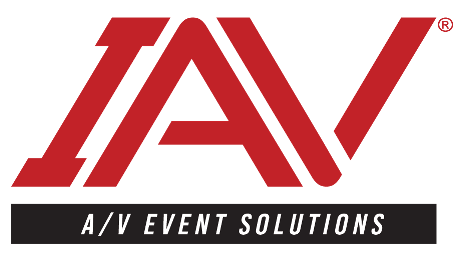Introduction
In the dynamic realm of today’s business environment, corporate training has become a pivotal element in fostering growth, innovation, and competitiveness. Advanced audiovisual (AV) solutions play a critical role in enhancing the effectiveness and engagement of corporate training programs. By leveraging state-of-the-art AV technology, businesses can deliver training that not only educates but also captivates, ensuring information retention and practical application in the workplace.
The Evolution of Corporate Training
The journey from traditional, lecture-based training methods to modern, technology-driven approaches marks a significant evolution in corporate training. This transition underscores the impact of AV technology in creating interactive and immersive learning experiences. Gone are the days of passive listening; today’s training environments are interactive, engaging participants through visuals, sound, and connectivity that mirror their digitally driven lives.
Key Components of an Effective AV Training Setup
- Interactive Displays and Whiteboards: These tools are at the forefront of fostering collaborative learning and real-time engagement. They allow participants to visualize concepts, engage interactively, and contribute to the learning process dynamically.
- Video Conferencing Systems: High-quality video conferencing is essential for connecting remote teams and facilitating global workforce development. It breaks down geographical barriers, enabling real-time interaction and collaboration.
- Sound Systems: Clear, distributed sound is critical for effective communication and comprehension during training sessions. A well-designed sound system ensures that every participant can hear clearly, enhancing learning outcomes.
- Recording and Streaming Equipment: Recording sessions for on-demand access extends the reach of training programs. Additionally, live streaming capabilities can engage wider audiences, making training more accessible and inclusive.
Designing AV Solutions for Diverse Training Environments
- Small Group Workshops: In intimate settings where collaboration is vital, AV technology becomes a linchpin for success. Utilizing tools like interactive whiteboards and group conferencing software, these technologies foster a collaborative environment where ideas can flow freely. By enhancing visual and auditory elements, small group workshops become dynamic spaces for learning, ensuring that every participant can contribute and engage fully with the content.
- Large-scale Seminars and Conferences: When addressing large audiences, the use of advanced AV solutions is non-negotiable for keeping participants engaged and ensuring the delivery of content is seamless. Large screens, professional sound systems, and live streaming capabilities are essential components. They not only captivate the audience’s attention but also facilitate a professional atmosphere where information is disseminated clearly, and engagement is maintained throughout the event.
- Virtual and Hybrid Training Events: The unique challenges of bridging in-person and remote participants are adeptly met with sophisticated AV technology. By employing tools such as high-definition video conferencing, virtual breakout rooms, and real-time polling and feedback systems, these events can replicate the interactive essence of traditional learning environments. This approach ensures that irrespective of their physical location, every participant has a cohesive and engaging learning experience, fostering inclusivity and maximizing the reach and impact of the training session.
The Role of AV Consulting in Corporate Training
AV consultants play a vital role in helping businesses assess their training needs, design customized AV setups, and implement scalable solutions. Through expert guidance, companies can create effective, engaging training environments tailored to their specific objectives. Case studies often illustrate how AV consulting can significantly enhance training outcomes, showcasing the tangible benefits of professional expertise.
Innovative AV Technologies Transforming Corporate Training
Emerging technologies like virtual reality (VR), augmented reality (AR), and artificial intelligence (AI) are revolutionizing corporate training.
Virtual Reality (VR):
- Immersive Learning Environments: VR creates fully immersive simulations where employees can practice and hone their skills in lifelike scenarios without the risks associated with real-world training.
- Enhanced Engagement: By placing learners in a controlled, interactive 3D environment, VR significantly boosts engagement and retention rates, making complex concepts easier to grasp.
- Safe Space for Trial and Error: VR offers a unique opportunity for learners to experiment and learn from their mistakes in a safe, virtual setting, which is particularly beneficial for high-risk industries.
Augmented Reality (AR):
- Real-World Overlay: AR enhances the real world by overlaying digital information onto it, making training more relatable and directly applicable to the job at hand.
- Just-in-Time Learning: It provides just-in-time information and guidance at the point of need, supporting on-the-job training and immediate application of skills.
- Interactive Manuals and Guides: AR can transform traditional manuals and guides into interactive learning tools, allowing employees to visualize complex processes and machinery operation in real-time.
Artificial Intelligence (AI):
- Personalized Learning Paths: AI can analyze individual learning patterns and performance to customize the training content, pacing, and difficulty level for each learner, optimizing the learning experience.
- Automated Administrative Tasks: AI streamlines administrative tasks related to training, such as enrollment, scheduling, and feedback collection, allowing trainers to focus more on content delivery and learner interaction.
- Predictive Analysis for Skill Development: By predicting future learning needs and skill gaps, AI helps organizations to proactively plan their training programs, ensuring that their workforce is always ahead of the curve.
These innovations offer unprecedented opportunities for creating realistic simulations, interactive learning environments, and personalized training experiences. They represent the cutting edge of training technology, with the potential to dramatically increase engagement and effectiveness.
Best Practices for Implementing AV Solutions in Corporate Training
Implementing AV solutions effectively in corporate training environments necessitates a strategic and thoughtful approach to maximize impact and ensure the technology aligns with educational goals. Here are key practices to consider:
Clearly Define Training Objectives:
- Identify the specific skills or knowledge the training aims to impart.
- Understand how AV technology can enhance these learning outcomes.
Assess Audience Needs:
- Consider the demographics of your audience, including their technological proficiency and learning preferences.
- Tailor AV solutions to accommodate different learning styles, such as visual, auditory, and kinesthetic learners.
Select Appropriate AV Equipment:
- Choose interactive displays and whiteboards for collaborative and engaging training sessions.
- Invest in high-quality video conferencing systems for effective remote training, ensuring global workforce inclusivity.
- Opt for clear, distributed sound systems to ensure every participant can hear the training content without strain.
- Utilize recording and streaming equipment to make training sessions accessible on-demand and extend the reach to wider audiences.
Integrate AV Solutions Seamlessly:
- Ensure that the integration of AV equipment into the training environment does not disrupt the learning process but rather enhances it.
- Test all AV solutions prior to training sessions to avoid technical difficulties that could impede learning.
Provide Training and Support:
- Offer comprehensive training to both instructors and participants on how to use the AV equipment effectively.
- Establish a support system for addressing technical issues quickly to minimize disruptions.
Maintain and Upgrade AV Systems:
- Regularly evaluate the AV setup to ensure it meets the evolving needs of training programs.
- Keep abreast of technological advancements and upgrade equipment as necessary to maintain a state-of-the-art training environment.
Measure Impact and Solicit Feedback:
- Assess the effectiveness of AV solutions in meeting training objectives through surveys, quizzes, and direct feedback from participants.
- Use insights gained from feedback to make informed decisions about future AV investments and training strategies.
Ensure Scalability and Flexibility:
- Design AV setups that can easily adapt to changing training sizes and formats, such as shifting from in-person to hybrid models.
- Choose modular and scalable AV systems that can grow with your training needs.
Prioritize Accessibility:
- Implement AV solutions that are accessible to participants with disabilities, ensuring inclusivity in corporate training.
- Consider features such as closed captioning for videos and assistive listening devices for sound systems.
By adhering to these best practices, organizations can implement AV solutions that not only meet the current needs of their corporate training programs but are also poised to adapt to future trends and technologies. This strategic approach ensures that investments in AV technology contribute to effective, engaging, and inclusive learning experiences.
Measuring the Impact of AV Solutions on Corporate Training
Assessing Participant Feedback:
- Collect feedback through surveys, interviews, and informal discussions to gauge participants’ perceptions of the AV-enhanced training.
- Analyze comments on the clarity of audio and visual elements, the ease of interaction, and overall satisfaction with the training experience.
Monitoring Performance Metrics:
- Track learner engagement metrics, such as attendance, participation rates, and completion rates, to understand how AV solutions influence engagement.
- Evaluate pre- and post-training assessments to measure knowledge gains and skills improvement attributable to the AV-enhanced training.
Conducting ROI Analysis:
- Calculate the return on investment by comparing the costs of implementing AV solutions against the benefits, including improved employee performance and reduced training costs over time.
- Consider both quantitative (e.g., productivity increases, cost savings) and qualitative benefits (e.g., enhanced employee satisfaction, better customer service) in the analysis.
Continuously Refining Training Strategies:
- Use insights gained from feedback, performance metrics, and ROI analysis to make informed decisions about future AV technology investments and training approaches.
- Adapt and update training content and delivery methods based on evolving business needs, technological advancements, and learner preferences to ensure ongoing effectiveness and relevance of training programs.
Conclusion
The transformative potential of AV solutions for corporate training is undeniable. By investing in advanced AV technology, businesses can enhance the learning experience, fostering a more knowledgeable, skilled, and engaged workforce. As we look to the future, the integration of innovative AV solutions into corporate training programs will continue to be a key driver of organizational success, encouraging businesses to embrace the long-term benefits of this pivotal investment.




